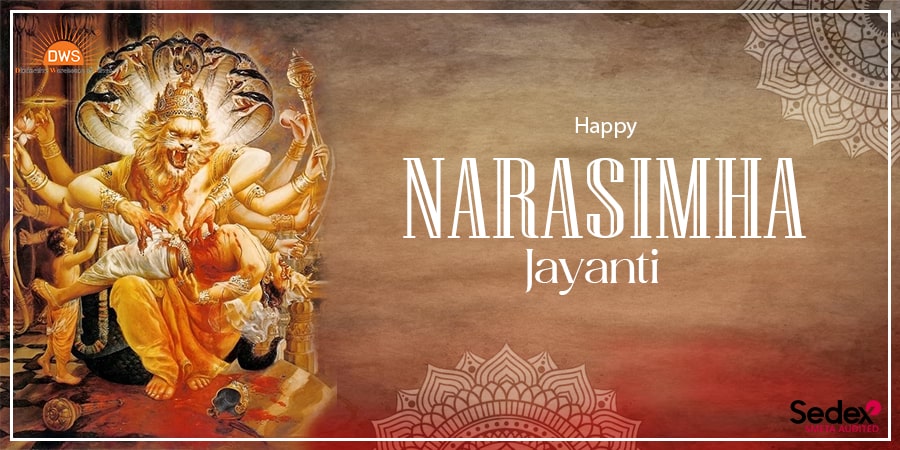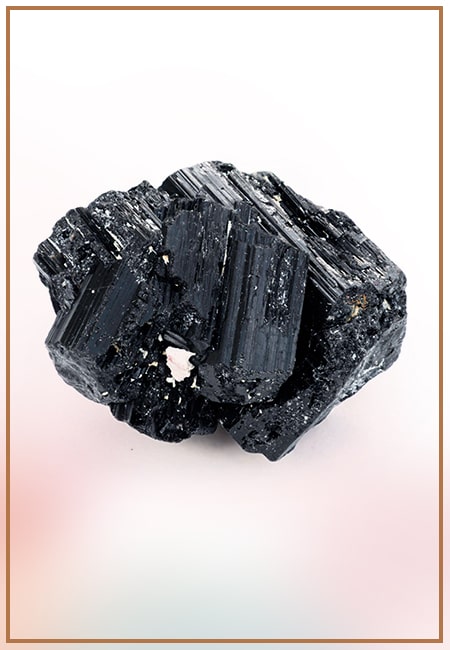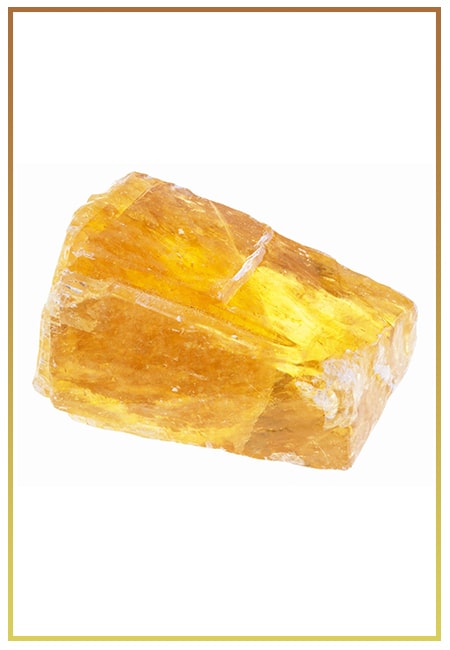- Written By Team DWS
- Festivals
- April 26, 2025
Celebrating Narasimha Jayanti: The Significance of the Half-Man, Half-Lion Avatar
Narasimha Jayanti, celebrated with great enthusiasm and devotion by devotees of Lord Vishnu, honors the appearance of Narasimha, the fourth avatar of the deity. This extraordinary incarnation, characterized as half-man and half-lion, symbolizes the divine intervention required to restore dharma — righteousness — on Earth. Falling on the fourteenth day of the bright fortnight in the month of Vaishakha (April-May), Narasimha Jayanti is a day of reverence, spirituality, and joyous celebrations, encapsulating profound theological significance as well as cultural richness.

The Legend of Narasimha
The origin of Narasimha’s avatar traces back to the myth of Hiranyakashipu, a powerful demon king whose ambitions led him to challenge the authority of the gods, particularly Lord Vishnu. Blessed with a boon that rendered him nearly invincible — he could not be killed by man or beast, indoors or outdoors, during the day or night — Hiranyakashipu grew arrogant and tyrannical, terrorizing all beings.
However, his son Prahlad, a devoted follower of Lord Vishnu, remained undeterred, devotedly chanting the name of his beloved deity. Infuriated with Prahlad’s unwavering faith, Hiranyakashipu subjected him to numerous brutal punishments, all of which failed to sway the young devotee. Fearing that his son’s commitment to Vishnu would inspire rebellion, Hiranyakashipu sought to eliminate him entirely.
In response to Prahlad’s prayers and the potent call for justice echoing amidst the injustice of Hiranyakashipu, Lord Vishnu descended in the form of Narasimha. Emerging from a pillar, Narasimha was a fierce and terrifying figure, embodying both the ferocity of a lion and the intellect of a man. The pivotal moment of justice unfolded when, at twilight, Narasimha confronted Hiranyakashipu at the threshold of his palace—a location that fell neither inside nor outside—and ultimately vanquished the demon, restoring peace and harmony in the universe.
Spiritual Significance
Narasimha embodies several crucial themes integral to Hindu philosophy and spirituality. His form illustrates the concept of divine love intertwining with justice. He represents that even in utmost hopelessness, divine support is always near, ready to intervene against tyranny and evil. Devotees recognize Narasimha not just as a historical figure or an avatar but as a symbol of unwavering faith, courage, and the assurance of divine protection.
His fearsome countenance also teaches us that while compassion and mercy are fundamental virtues, so is the fierce protection of righteousness. The duality of Narasimha as both gentle and wrathful emphasizes the need for balance in life—embracing love while not hesitating to stand against injustice when necessary.
Rituals and Celebrations
The celebration of Narasimha Jayanti is imbued with rich rituals and vibrant traditions. Devotees often wake up early, engage in prayers, and read or recite the Narasimha Purana, which elaborates on the exploits and qualities of this formidable deity. Temples dedicated to Narasimha hold special pujas, wherein intricately decorated idols of the lord are worshiped with flowers, fruits, and traditional offerings.
One of the most cherished rituals includes the chanting of the Narasimha mantra, invoking the protection and blessings of this fierce form of Vishnu: “Om Namo Bhagavate Narasimhaya.” Many devotees also observe fasting, extending their devotion and spiritual reflection throughout the day. As night falls, celebrations often culminate in grand festive gatherings, featuring dance, music, and culinary delights symbolizing the abundance and joy ushered by Narasimha’s divine presence.
Cultural Significance
The cultural impact of Narasimha Jayanti extends to various forms of art, literature, and theater across India. Folk tales, dance dramas, and modern theatrical performances continue to recast the story of Narasimha, keeping the narrative alive in contemporary society. One popular tradition is the enactment of the Hiranyakashipu-Prahlad-Narasimha story through Ramleela and other performance arts, which not only entertain but also impart moral lessons about faith and perseverance against adversities.
Furthermore, the festivities offer an opportunity for community bonding and feasting, strengthening social ties among participants. Families and friends come together to celebrate, sharing stories of devotion and grace attributed to Narasimha, thus preserving a rich cultural heritage while nurturing a sense of collective identity.
Conclusion
Celebrating Narasimha Jayanti is a powerful reaffirmation of faith, justice, and the striking balance between divine mercy and wrath. It is a reminder to remain steadfast in our beliefs, drawing inspiration from the valiant avatar who overcame evil for the sake of righteousness. As devotees gather in temples and homes, engaging in prayers and rituals, they evoke the spirit of Lord Narasimha, seeking his protection and guidance. This sacred day encourages reflection on the importance of standing up against injustice and the perseverance required to uphold dharma. Through the recitation of hymns and stories of Narasimha's exploits, devotees not only commemorate his incredible strength but also reinforce their commitment to compassion and truth in their everyday lives. The celebration serves as a unifying force, bringing communities together in shared devotion, fostering a sense of hope and resilience against the challenges life presents. Ultimately, Narasimha Jayanti embodies the power of faith to transcend darkness, ensuring that righteousness prevails in the world.
Narasimha Jayanti FAQs: Your Guide to the Festival and Its Significance
Certainly! Here’s a list of frequently asked questions (FAQs) about Narasimha Jayanti:
1. What does Narasimha Jayanti celebrate?
Narasimha Jayanti is a Hindu celebration that commemorates the manifestation of Lord Narasimha, an incarnation of Lord Vishnu. He is depicted as half-man and half-lion and is revered for his role in protecting his devotees and destroying evil.
2. When is Narasimha Jayanti celebrated?
Narasimha Jayanti is typically celebrated on the 14th day of the waxing moon (Shukla Paksha) in the month of Vaishakha, which usually falls in April or May, depending on the lunar calendar.
3. What is the significance of Narasimha Jayanti?
The festival commemorates the day when Lord Vishnu took the Narasimha avatar to protect his devotee Prahlada and to defeat the demon king Hiranyakashipu, who was oppressing Prahlada and others. It symbolizes the triumph of good over evil.
4. How is Narasimha Jayanti celebrated?
Celebrations may include:
- Special prayers and rituals: Devotees perform puja (worship) to Lord Narasimha, often reciting mantras and hymns from the scriptures.
- Reading scriptures: Many read texts like the Narasimha Purana, Bhagavata Purana, and other scriptures that narrate the story of Lord Narasimha.
- Fasting: Some devotees observe a fast on this day.
- Community gatherings: Temples often hold special gatherings and events, including processions, bhajans (devotional songs), and discourses.
5. Is there a specific time to perform rituals for Narasimha Jayanti?
While specific timings may vary, many devotees believe the most auspicious time is during the evening or twilight, as Lord Narasimha is said to have appeared during this time.
6. What are the common offerings made to Lord Narasimha?
Common offerings include fruits, milk, sweets, and flowers. Special dishes may also be prepared, depending on regional customs.
7. Who can celebrate Narasimha Jayanti?
Narasimha Jayanti can be celebrated by anyone who follows Hindu traditions. It is especially significant for followers of Vaishnavism, who revere Lord Vishnu and his avatars.
8. Are there any traditional practices associated with Narasimha Jayanti?
Yes, many practitioners may wear new clothes, offer prayers at temples, participate in kirtans (devotional singing), and engage in charitable activities.
9. What is the story behind Lord Narasimha's appearance?
According to Hindu texts, Prahlada, a devotee of Lord Vishnu, faced severe persecution at the hands of his father Hiranyakashipu, who had received a boon that made him nearly invincible. To protect Prahlada and to uphold dharma, Lord Vishnu manifested as Narasimha, emerging from a pillar to confront Hiranyakashipu, ultimately defeating him.
10. What is the message of Narasimha Jayanti?
The festival conveys a powerful message about faith and devotion. It illustrates that sincere devotion can overcome all obstacles, and divine justice will prevail, emphasizing the protection of the faithful from harm.
Feel free to customize or expand this list based on the audience or context you have in mind!
Popular on Blogs

Black Tourmaline: Meaning, Healing Properties, Fascinating Facts, Powerful Attributes, Versatile Uses, and Beyond
September 05, 2023 / BY Team DWS
Black Tourmaline, also known as Schorl, is a highly revered crystal with incredible metaphysical properties. It derives its name from the Dutch word "turamali," meaning "stone with ..

Carnelian Stone: Meaning, Healing Properties, Power, Facts, Color, Uses and More
December 26, 2023 / BY Team DWS
Carnelian is a vibrant and captivating gemstone that holds a plethora of meanings, healing properties, and powers. Its warm and fiery energy makes it a popular choice among crystal ..

Citrine: Exploring its Meaning, Healing Properties, Fascinating Facts, Powers, Versatile Uses, and Much More
November 18, 2023 / BY Team DWS
Citrine, with its warm golden hues, has captured the attention and imagination of people for centuries. This beautiful gemstone, commonly associated with wealth and prosperity, hol ..

Black Onyx: Unveiling the Meaning, Healing Properties, Fascinating Facts, Powerful Attributes, Versatile Uses, and Beyond
July 25, 2023 / BY Team DWS
Black Onyx, a striking gemstone admired for its deep black hue and elegant appearance, has captivated people for centuries. In this comprehensive guide, we will delve into the mean ..

Unveiling the Mysteries of Turquoise Stone: Exploring its Meaning, Healing Properties, Power, Facts, Color, Uses, and More
December 05, 2023 / BY Team DWS
Turquoise, with its captivating blue-green hue, has been adorning jewelry and artifacts for centuries. This striking stone has a rich history, rich symbolism, and a plethora of int ..

The History Behind The Popularity of Red Agate
December 23, 2022 / BY Team DWS
An Agate is a type of magma rock that takes many years till it is washed out naturally into the water. And that is the reason this stone has elements of water. This beautiful stone ..

Plan a Perfect Valentine's Week with Our Valentine Week List 2025
January 22, 2024 / BY Team DWS
Valentine's Day is undoubtedly the most romantic day of the year, but we believe that one day is just not enough to express your love and make your partner feel special. That's why ..

Bloodstone: Unveiling the Meaning, Healing Properties, Facts, Powers, Uses, and More
August 21, 2023 / BY Team DWS
Bloodstone, with its captivating deep green color with specks of red, is a mesmerizing gemstone that has fascinated civilizations for centuries. It possesses unique healing propert ..


